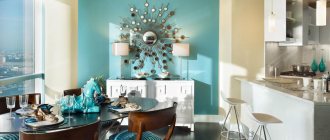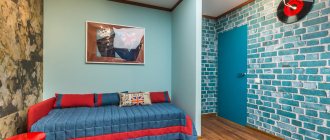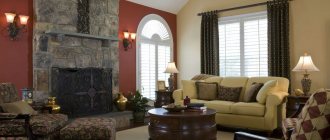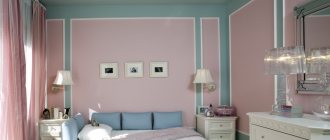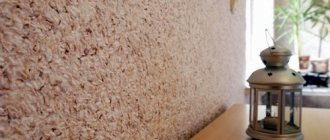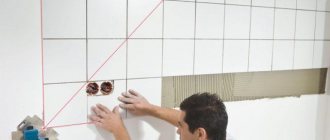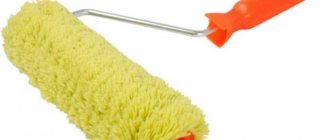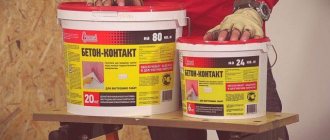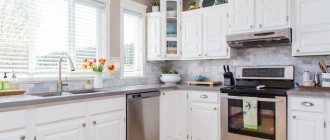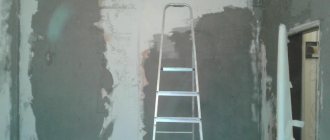The best silicone compounds
The presence of silicone helps to obtain high levels of resistance to environmental factors. Suitable for use outside and inside the building. The composition contains antiseptic elements. However, you will have to pay more for high performance.
The rating of silicone interior paints highlights the following best types:
- "Capasilan" is applied evenly without leaving visible joint areas. Used for porous materials, the degree of hiding power is high;
- “Euro Extra 20” from Tikkuril, can be washed, is resistant to sunlight and water, and has bright colors. Suitable for kitchen, bathroom;
- "Lithotherm Paint Sil" is a paint sold at a reasonable price, while the quality is high. It is resistant to moisture and ultraviolet radiation. A wide palette of colors is available.
It is used for porous materials, the degree of hiding power is high.
Why process and paint lining
Before painting the lining on balconies, you need to decide for what purpose the selected material is used. Any wooden material needs additional processing, even if it is well dried and sanded. Coloring should be done for the following purposes:
- Protection from direct exposure to sunlight. Regular exposure to ultraviolet radiation leads to darkening of wood and deterioration of the decorative qualities of the coating in some places.
- Prevention of changes in natural shade. This problem appears in case of poor ventilation in the room, air stagnation, or excess humidity.
- Protection from the influence of biological factors, damage by insects, rotting.
- Prevention of mechanical damage.
- Increasing the fire resistance of the finish.
Before you use clapboard paint inside your home, you need to understand that finishing can change the interior design. There are many options for finishing a wood base. But in order to decide how to paint the lining on the balconies, you need to take into account the purpose of applying the layer, the type of facing material, why the building was built, and under what conditions it will be used.
Oil based paint
Previously, coloring compositions containing mineral or vegetable oil solvents had no competition in the building materials market.
After application, the oil paint component oxidizes and dries, leaving a colorful film coating on the surface. But the drying process takes too long. In addition, the durability of the painted coating is low. After a couple of years, the painted coating begins to crack, losing its attractiveness. The resulting film during painting is practically impenetrable to water vapor, and this is unacceptable when the microclimate is normalized.
You should immediately stop purchasing oil paint, since its low price is its only advantage. It will not be easy to update such coverage. Before re-painting, after some time you will have to completely remove the old layer. Otherwise, the paint coating will not apply well.
Glossy or matte: which is better?
The greater the degree of dullness of the coating, the more difficult it is to wash it from fingerprints, splashes of gouache or watercolor, traces of a dirty ball with which a child played on the street and decided to play at home too, and so on. At the same time, glossy (and easiest to clean) paint is quite rare among ideas for painting walls in a nursery.
The optimal degree of gloss in children's paint is not less than 5%, but not more than 40%.
If you want walls that are matte, but at the same time washable from dirt, choose compounds with a gloss level of 7-15% : this is how shiny an eggshell is. Simple stains on them can be easily washed with a damp sponge and detergent.
And if you need the most practical surfaces, choose semi-matte, satin paints (gloss level 16-40%).
Design: DVEKATI
Design: DVEKATI
Safe paint for human health and the environment
How safe is your home? Every evening, tired of the city bustle, stress at work, crowded streets, industrial noise and rather dirty air, we rush home - to our loved ones. Hiding behind the walls of apartments, we regain a sense of security, but are we really protected? Whether the walls themselves pose a threat, how safe the paints are, whether the linoleum recently laid in the nursery is emitting harmful fumes - we never know for sure.
Time and again the question is raised about the content of harmful substances in paints and varnishes that negatively affect human health and the environment. According to Wikipedia, the total annual consumption of paints in Russia is about 1 million tons according to the Federal State Statistics Service. It is difficult to imagine how much the incidence of diseases caused by toxins and harmful substances would increase if all these paints were as harmful as skeptics say.
Modern paint production technologies have long made it possible to avoid the use of harmful components, and many of them have long been banned and are not used. And yet, let’s not hide the truth, there are unscrupulous manufacturers who violate standards and rules to reduce the cost of products.
So what should a person stand in front of a huge paint display in a building materials store do? I can’t get it out of my head that you can inhale some harmful fumes for years without even noticing it, but on the other hand, on almost every can, manufacturers have tried to emphasize the environmental friendliness of the paint and its complete safety for health.
Painting features
Select materials in accordance with design requirements. The light color of the lining increases the volume of the room, and the dark color makes it smaller.
You should not purchase inexpensive paints from an unknown manufacturer. Based on the results, you will have to apply several layers instead of one or two high-quality compositions, so there will be no savings.
What you need to know before starting work
Before starting work, the paint must be thoroughly mixed.
Before applying the paint, mix thoroughly until smooth . Storage in a store or warehouse leads to thickening and sedimentation, so this stage is not missed. They do a test color to determine the color after drying - many films turn out to be a lighter or darker shade, not as expected.
Subtleties of coloring:
- the composition is applied in thin layers so as not to create drips;
- the next layer is made after the previous one has dried;
- To paint the surface within one wall or ceiling, paint material is taken from one production batch.
If it is necessary to interrupt work, the boundary of the future docking is left so that it is not in a visible area.
Tools and materials
The lining has a complex surface and forms depressions at the joints, so painting is done with a roller simultaneously with a brush. Horizontal, easily accessible planes are passed with a roller, and deep seams are treated with a brush.
you will need :
- a bath for diluting paint, dipping a roller with a spinning pad;
- handle for attaching a roller or brush (at a high height);
- stepladder or scaffolding;
- gloves, respirator, foam sponges.
You will need lining paint, solvent, and primer. Take the necessary antiseptic impregnations and fire retardants for protective treatment.
Preparing lining for painting
Preparation includes three stages: drying, mechanical processing and priming. Drying is required for high-quality adhesion of the paint to the surface. On a damp lining, the composition will last 1 - 2 years, then it will begin to peel off. Doors and windows are opened in the room to allow fresh air to enter.
To clean old paint and varnish, the following methods :
- Mechanical. Take a scraper, brushes with metal teeth, a spatula and a hair dryer. The method is effective, but there is a risk of surface damage.
- Chemical. The surface is lubricated with synthetic removers and artificial solutions. Use a soda solution (100 g of soda per liter of water). Aggressive components often have an unpleasant odor and can be hazardous to health.
For priming , use products that are compatible with the new paint. They are applied with a brush.
Third: please show permits for paint
All paint and varnish materials must have a set of permits, which is provided upon request of the buyer. This may include both mandatory and optional documents.
Please note the following:
• Expert opinion on product compliance with the Unified Sanitary-Epidemiological and Hygienic Requirements for Products; • Voluntary certificate of compliance with fire safety requirements; • Certificate of state registration (Customs Union); • Certificate of compliance with the requirements of regulatory documents and technical documentation of the manufacturer.
In the case of imported products, an optional but important indicator of the quality and environmental friendliness of the paint is whether the manufacturer has one or both certificates:
• ISO 9001 certificate, • ISO 14001 certificate.
If the first confirms compliance with international standards for the quality management system of enterprises, then the second speaks of product safety: compliance with environmental management standards.
Now the most interesting part: we check the safety of paint using an example
So, in order to understand that the paint is safe for the health of children, including:
1. require permits; 2. carefully study the text on the packaging; 3. pay attention to little things. There are separate brands on the paint and varnish market that position themselves as manufacturers of environmentally friendly materials
Let's check one of these, let's take as a clear example Belinka Latex paint for interior surfaces subject to heavy wear, especially since the manufacturer specifically emphasizes that it can be used in public and residential premises, children's institutions and hospitals.
There are separate brands on the paint and varnish market that position themselves as producers of environmentally friendly materials. Let's check one of these, let's take as a clear example Belinka Latex paint for interior surfaces subject to heavy wear, especially since the manufacturer specifically emphasizes that it can be used in public and residential premises, children's institutions and hospitals.
So, we pick up a can of paint or, alternatively, go to the distributor’s website for information. We look at the label or study the characteristics on the corresponding page of the Belinka website.
The composition of this latex paint includes: “acrylic copolymer dispersion, pigment, fillers, special additives and water.” Even without understanding anything about chemistry, you can understand that this paint is water-soluble - it is recommended to wash the tools and dilute the paint itself with water:
A simple “do not drain” icon is a small but clear sign that manufacturers have thought about sustainability in all aspects:
The method of application is described in detail and recommendations are given. The jar contains the batch number, dates, and information about the manufacturer and importer.
Let's look at the documentation.
• Certificate of Conformity issued by LLC “Product Certification “Standard-Test”: “products comply with the requirements of regulatory documents and technical documentation of the manufacturer.” • Certificate of state registration: “products have passed state registration, are included in the register of Certificates and are authorized for production, sale and use.” • The OS Conformity Certificate of Pozhstandart LLC confirms that the products “comply with the requirements of the technical regulations on fire safety.” • Expert opinion of the Federal State Health Institution “Center for Hygiene and Epidemiology in Moscow”: “Complies with sanitary, epidemiological and hygienic requirements for goods.” Pay attention to the hygienic characteristics of the products: the content of controversial substances not only does not exceed the norm, but is also hundreds and thousands of times less than permissible
All documents are relevant today and confirm the quality and safety of a number of paints, including the same Latex paint for interior surfaces subject to heavy wear.
Moreover, since the products of this brand are manufactured in Slovenia, we went to the manufacturer’s website and - yes, we found ISO 9001 and 14001 certificates.
We conclude: Belinka Latex paint is truly environmentally friendly and can be used in public and residential premises, hospitals and children's institutions.
Using the same scheme, you can check any other paint. When choosing, remember that the paint should not harm you, your children, or the environment in general. Pay attention to the details and don't be shy about asking for documentation.
What do you need to know?
Features of painting wood inside the house, including in the country:
- The porous structure of the surface texture of the panels requires special treatment before applying paints and varnishes. If this is not done, there will most likely be uneven absorption and drying of the protective coating. This can ruin the appearance and quality of the wood.
- Due to the resins and oils in coniferous wood, any paint is not always suitable for processing. It is better to choose a composition that clogs the pores, creating a durable, solid, moisture-resistant layer and coating that prevents resins from escaping.
- If you do not coat the wood with a special primer, there is a risk of getting a coating that is uneven in structure. The film may even crack or darken after a short time. The desired decorative effect, which is described in the composition instructions, cannot be achieved.
- Sometimes standard panels require additional sanding. If the surface is perfectly flat, then the coloring materials will be evenly distributed and applied.
- Often one layer of coating does not give the desired effect. Either the color is too light, the finish is not shiny enough, or there are stains or other imperfections. Therefore, it is recommended to apply several layers, but only on a completely dry surface.
Attention
With full and careful adherence to the recommendations of the manufacturers of coloring compounds and proper preparation of the lining, the coating will be beautiful and truly protective.
Types and applications
Latex paint has a wide range of uses. Depending on the type, it can be used for exterior decoration or for indoor work. Substances for painting facades have a special compound that protects the surface from the formation of fungus and mold. The following paints are suitable for painting indoor surfaces:
- acrylic is a good solution for painting wood;
- vinyl – ideal for painting ceilings and walls;
- dense - intended exclusively for ceilings;
- textured - an excellent solution for creating a relief print, embodying the most daring design ideas;
- dripless - allows you to hide various types of unevenness and cracks.
Depending on the appearance, acrylic paint is divided into several types:
Matte is an ideal option to hide some imperfections on the surface. It perfectly masks small irregularities. Such tiles are not afraid of exposure to sunlight, since they practically do not heat up. Its disadvantage is that it gets dirty quite quickly. It requires careful and frequent maintenance, but withstands contact with water and friction perfectly.
- Glossy is a good solution for decorating a room inside or outside. It allows you to visually increase the area of the room. This paint practically does not get dirty. Its disadvantage is that it can only be used for painting a flat surface.
- Semi-matte - acts as the golden mean between matte and glossy paint. It combines the advantages of the types described above.
There is another classification of latex products, which depends on the additives introduced into them.
Polyvinyl acetate
This paint is produced on the basis of PVA (vinyl acetate polymer). It is also often called water-emulsion or water-dispersion.
Advantages of polyvinyl acetate paint:
- does not contain solvents;
- practically no smell;
- has good adhesion to the surface;
- Easily washes off your hands if it is not yet completely dry;
- affordable price.
But water-based paint can be washed off even after complete drying, so it is not recommended for use for external work. It has a chalky effect, and as a result, if you come into contact with it, you can stain your clothes.
This paint is ideal for painting ceilings as it is ideal for working in hard-to-reach areas in dry rooms.
Butadiene styrene
This type is considered by many to be water-based latex paints. The difference is that styrene-butadiene paint is characterized by excellent moisture resistance and increased wear resistance. It is inexpensive, so it is in demand.
Its disadvantage is its low light fastness. When exposed to sunlight, it changes color very quickly. It can be safely used for interior work. It is ideal for a hallway, hallway or pantry.
Acrylic silicone
This option is ideal for painting facades. It is resistant to moisture and light, and is also characterized by increased vapor permeability. This paint is an excellent substitute for silicate and silicone. It has similar properties as silicate, but is cheaper, so there is always a great demand for it.
Acrylic
This option is expensive, but has excellent performance. It can be used to decorate building facades or as interior enamel. She retains her attractive appearance under any circumstances.
Many buyers agree that it is better to buy expensive acrylic paint and paint the room once for a long time, than to buy a cheap analogue every year and paint it again.
Latex paints are universal because they are suitable for painting various surfaces. They fit well on drywall, foam concrete, plaster, even on plastic window sills.
Carrying out the procedure
To paint wooden panels, paint or varnish with colors and dyes of different types and compositions is used (how to properly varnish a panel for a long time?). Application techniques and finishing methods depend on the composition of the paintwork material.
Varnish
To paint wooden panels with varnish you will need:
- check all existing lining, sort it by color and quality, exclude panels that contain falling knots or other obvious defects;
- thorough sanding is carried out until absolutely smooth to the touch is achieved;
- if necessary, cover with a special primer or apply the first base layer of varnish, leave each canvas to dry without touching the treated surface;
- if an opaque varnish is used, then repeated sanding over the painted layer is necessary;
- A second layer of varnish is applied until the color is uniform over the entire area of the canvas, and then dried.
Advice
Rejected panels can be used as test panels. On them you can see the type of coating with different numbers of layers, etc.
You can watch how to properly varnish the lining, what tools and techniques to use for this, in the following video:
Dyeing white
To create the desired decorative effect, several coloring techniques are available:
- Acrylic pigment primer diluted to 80-100% is applied like a regular varnish. It creates a coating with a long service life, but its price is high.
- Polyurethane pigment primer labeled “bleached” or “white” with a dilution of up to 80-100% also provides the desired decorative effect, but over time the color becomes yellow.
- Oil with wax - with a single-layer coating requires rubbing with a rag to preserve the wood texture; with a two-layer finish the surface is opaque.
- Tinting or staining - often found with the markings “bleached oak”, “frost” and the like. The peculiarity of the finishing is a multi-layer coating with very thin and uniform films. Otherwise, a peeling effect will form on the surface.
These methods provide different shades of white, depending most on the type of wood.
You can learn how to quickly and correctly paint the lining white from this video:
Technicians
For high-quality painting of lamellas, the following rules must be followed:
- Dry lining is processed only from the outside, and a wet panel must either be pre-dried or processed on all sides, including the ends. This is especially true for rooms with high humidity.
- The coating is applied to each plank separately to achieve an even color over the entire surface and to prevent the appearance of visible boundaries between strokes.
- When painting lining that is already installed on the wall, it is difficult to achieve maximum filling of the joints, so you need to choose a special brush.
- It is necessary to adhere to the technology recommended by experts for painting tongue-and-groove wooden lamellas.
Attention
If the quality of the first layer remains below average, then it needs to be sanded and primed again. Apply paint only to dry boards.
This approach will even out the density across the entire surface of the material to ensure a uniform shade.
Often they cover surfaces that are already installed on the wall. Therefore, the technology may differ slightly. You need to paint along the board, but with movement from one edge, for example, from one doorway to another. This will provide more even coverage as there will be no wet transitions.
Residential paint
The material for a living room must meet the main requirement - safety.
But resistance to ultraviolet rays and decorativeness of the coating are also important. Sometimes cleaning ability is also important, but often only for children's rooms. In this case, the paint should dry quickly and not have a strong smell. It is worth highlighting water-based paint. The water-based composition fully complies with the listed requirements. The binding component can be different, and this changes some qualities. They dry quickly, do not harm health, and do not emit a pungent odor. You can highlight the most popular options in this group:
- Water-based. The base is polyvinyl acetate. Easy to apply, two coats are enough to get an even color. The wall can “breathe” due to the resulting film, which is capable of transmitting water vapor. It is tinted perfectly, the cost is low. But there are also disadvantages: this type of paint is not resistant to abrasive or mechanical influences.
- Water-dispersible silicone. They can heal even decent cracks up to two millimeters. After drying, a film remains that is not afraid of moisture, does not fade over time, or is seriously damaged. The walls do not need to be perfectly leveled before application. Dust does not accumulate on a smooth surface. Can be used in rooms where there is usually a damp atmosphere. Due to its UV resistance, it is often used as an exterior finishing material. But this ideal option has a high price.
- Acrylic water-dispersed. They apply well, do not fade, are tinted well, and cover small cracks. Vapor permeability is average, the surface can be washed. The cost can be called average, so this option is more popular than silicone compounds. Suitable for painting walls in the house and for decorating the ceiling.
How to properly prepare wood?
Before applying paint and varnish composition to wood, it must be prepared.
Drying the panel
On raw wood, the maximum service life of paint and varnish coatings rarely exceeds 2 years, and more often it is even less than 1 year. Therefore, the lamellas must be kept outdoors or indoors, the humidity of which is more than 15% for up to 30-40 days. It is advisable to avoid direct sunlight, which will lead to uneven drying.
Deep penetration antiseptics significantly speed up drying.
You can check the humidity level like this:
- cut a square of 0.4x0.4 m from polyethylene;
- wrap the panel and secure it tightly with tape;
- maintain in this state for a day in room conditions;
- measure the moisture content of polyethylene from the inside.
An oilcloth that is wet to the touch indicates that the panels have not dried sufficiently.
Processing of lamellas
If materials are category B, then they must be sanded. To do this, use a power tool or regular wood sandpaper. In this case, the last stage should be carried out with finishing fine-grained sandpaper. This is done to level the surface of the lining in the area of knots, various inclusions, and differences.
Advice
You can process the wood after attaching it to the wall with a grinder or an abrasive nylon brush.
Read about how to properly attach the lining here.
Applying primer
The essence of treatment with this composition is the creation of a dense layer on the surface of the wood, which binds dust, eliminates small specks after sanding, and reduces the porosity of the material. Adhesion increases, and paints and varnishes gain stronger adhesion.
An additional advantage will be the fact that after such surface treatment, paint consumption is significantly reduced. Therefore, you can purchase more expensive and high-quality compounds.
The following types of wood primers are used:
- based on epoxy resin;
- based on silicone and acrylic;
- acrylic.
You only need to choose a special composition for interior decoration; for this you need to make sure that the packaging has the appropriate markings.
How to paint the walls in a nursery yourself?
It is better to entrust the preparation of walls to professionals: surfaces for painting must be perfectly leveled, and this is a complex multi-stage process with a lot of technological nuances. But the task of how to paint the walls in a nursery, if they are already prepared, or repaint them from one color to another, is feasible even for an amateur.
What will you need?
- a large roller for the main area and a small one (10-12 cm) for painting walls at the junction with the ceiling, floor, and small details. Instead of a small roller, you can use a paint brush;
- bath for dipping the roller. You need a special, rectangular shape, made of two parts: deep to pour paint into, and flat, with a ribbed surface to roll a roller over it to evenly absorb the composition into the coat and remove excess;
- masking tape - you can use it to cover sockets and switches, as well as joints with other surfaces - ceilings, floors, window sills, built-in cabinets and shelving;
- covering film: it is laid on the floor, cabinets, tables and other furniture.
Design: Victoria Lazareva
Design: Victoria Lazareva
We paint the walls in the nursery like a pro: 5 basic rules
1. You need to paint in at least two layers, waiting for each layer to dry completely. More layers may be needed - this depends on the covering power of the composition. The better the paint, the higher its hiding power, and the less consumption, effort and time spent on work. 2. First of all, the corners and joints are painted, then the main area of the walls. 3. Each layer is applied with a roller strictly in one direction: either horizontally or vertically. And when applying the next layer, the direction of movement of the roller needs to be changed: for example, if the first layer was applied up and down, the second is applied left and right, the third is applied up and down again. This way the composition will be applied more evenly, without smudges or unpainted areas. 4
When dipping the roller into the bath, it is important to move it along the ribbed surface each time so that the fur coat is well soaked and does not absorb excess.5. To see unpainted areas, you need to look at the surface to be painted from a different angle, step back a few steps, look from different angles
Then the glimpses can be painted over immediately, without waiting for the layer to dry.
Design: Masha Fainberg
Design: Masha Fainberg
Wood stain colors
Wood stains differ not only in composition, they come in different colors and shades. Most often, a dark mixture is used; it gives the products a more noble appearance. With the help of such stains, ordinary larch and maple can be turned into oak boards.
Modern stains can give wood the most unusual shade. However, to this day the range of natural wood colors is considered the most popular.
Before choosing a wood stain color, you should study the designers' recommendations.
The most popular stain colors:
- Pine;
- Birch;
- Bleached walnut;
- Plum; Red tree;
- Olive;
- Rosewood;
There are many such examples. It is noteworthy that the names of the same shade from different companies can differ greatly. When choosing the color of stain, first of all, pay attention not to the color palette that is printed on the packaging, but to the samples printed on birch boards.
It is also important to consider that the intensity of the color of the stain depends on the type of wood on which it is applied. Giving a dark shade to an item if the wood from which it is made will be more difficult than darkening an oak item. A non-aqueous stain will not be able to stain a pine board well enough unless it is first desalted, but water-based stains are generally unsuitable for resinous wood species.
Colored strands on hair: fashion trends - 2021
The fashion for multi-colored strands made itself known a few years ago. There was a real boom in 2021. Bright accents created using dyeing have become part of the looks at the shows of Prada, Jean Paul Gaultier, Yohji Yamamoto, Haider Ackermann, Tsumori Chisato and other popular brands.
Stars began to appear on the red carpet with hair of all colors of the rainbow - it turned out that this was not a teenage trend that only young people could appreciate.
Very soon the trend was picked up on Instagram, and it got to the point that some stylists began to make drawings on their hair, coming up with new techniques for working with dyes.
The following colors were at the peak of popularity:
- 1
PinkThis is the choice of many girls: blondes like coloring with a “strawberries and cream” effect - a soft result with pink pastels; Brunettes, on the contrary, prefer contrasting fuchsia strands.
- 2
BlueIn both the first and second cases, painting blue is an option for the most daring. The accent will be noticeable in any case. If pink can still be brought closer to the natural shade of the hair by choosing a lighter dye, then blue will look extravagant in any concentration.
- 3
TurquoiseThe same can be said about turquoise. However, here you can choose pastel - a mixture of turquoise with a milky white tint, and then the result will turn out tender and delicate. Most often this color is used for “mermaid” coloring.
- 4
VioletThis color is also popular with girls who, following the fashion trends of 2021, are ready to transform into a mermaid. Both brighter purple, from the neon spectrum, and pastel lavender are actively used - this option is more suitable for dreamy people.
- 5
GreyAt first, ashy shades were in fashion; later, gray hair coloring became a trend. And not completely, but in strands. Therefore, such dyes are also in demand.
The result looks interesting - especially on young girls with a bright individual style.
We recommend reading:
- Hair makeup: testing L'Oréal Paris Colorista spray color
How to dye the ends of your hair at home?
- New Year's look with colored hair
Choosing a color for painting the lining
Before painting the wooden lining inside the house, you need to choose the color of the decorative coating, as it should be in harmony with the overall design. To get the desired shade, you can use color. Mixing several tones, if done correctly, will make it possible to create a complex color that will make the interior original.
Craftsmen often use white paint for lining. It helps to create a cozy atmosphere and is used in Provence and classic style. In this way you can achieve the effect of bleached oak. Paint provides a visual increase in space.
Bleached oak fits into any interior and harmoniously combines with different shades. Translucent options only emphasize the structure of the wood.
Painting walls: pros and cons
First you need to figure out why this type of decoration, such as painting walls, is attractive, and whether there are any disadvantages to this method of decoration.
The advantages of this method include:
Numerous variations of wall decoration. There is an opportunity to take on bold projects, combine different shades and textures, and apply picturesque designs. You can experiment with paint and varnish materials. Basic colors are transformed into an endless number of different shades.
If the surface of the walls is carefully prepared for painting, for example, leveled with putty, the paint coating will adhere better. The decorative coating will last longer if you use only high-quality paints and varnishes.
Disadvantages of painting walls include:
High-quality painting requires careful surface preparation. If this is not done, the paint coating will not hide even the smallest defects. On the contrary, it will rather highlight the existence of shortcomings.
The painting process is not as simple as it seems. Lack of experience, non-compliance with technological recommendations, and the use of cheap, low-quality material will result in an uneven coating in texture and color.
The paint and varnish material does not tolerate mechanical stress, as well as aggressive abrasive loads. Scratches, various chips, and unsightly abrasions will result from careless use of a residential apartment.
Dust accumulates on painted walls. The exception is glossy finish.
How is coloring done?
How to paint lining so that the effect is long and impressive? For such an event you will need a set of tools:
- Set of brushes and roller. If possible, then a spray gun.
- Tray. To make it easier to pick up paint.
- Protective and decorative compounds.
- Sandpaper, stiff brush.
- It is better to have a stable stepladder and glasses to protect your eyes.
Using a spray gun allows you to quickly complete the work of painting the lining.
Painting consists of several stages. It is much more difficult when work is carried out on an old coating. Then it becomes necessary to remove the old decorative layer and clean the surface well.
Stage one - preparation
Purchased products are checked for possible damage and deformation. It often happens that materials are purchased that belong to a lower class. They require a long preparation - they are processed with sandpaper, and the cracks are covered with wood putty. If there are dark spots on the surface, then bleaching is performed.
If the material has defects in the form of cracks, they are eliminated using putty
Stage two - primer
It is necessary to cover the front side of the lining with priming compounds. This will reduce the consumption of other solutions, increase adhesion, and will also prevent the elements from being subject to deformation
In this case, special attention is paid to the knots; they are literally impregnated to eliminate the possibility of falling out if drying occurs
The primer improves adhesion when painting lining
Stage three - impregnation
Now protective impregnations are applied. These are fire retardants and antiseptics. Impregnation is carried out over the entire surface. Do not allow unpainted areas to remain
It is important to consider that such products should not have any foreign (pungent) odors or change the color of the wood.
When applying protective impregnation, it is necessary to ensure that no untreated areas are left.
Stage four - coloring
How to paint lining inside a house? This procedure begins only after the material has dried well from previous manipulations. The process is:
- The paint is prepared in advance. The solution must be well placed, because at the bottom there may be sediment, which includes the main components.
- A small part of the composition is poured into the tray if a roller is used. It is better to provide a container for the brush that is easy to carry. Using a spray gun makes the work better, and the paint is poured into a special container.
- It should be taken into account that movements are performed along the fibers of the material. You can’t stay in one place, the coating should be uniform.
- Several layers are applied, this will provide an excellent decorative effect.
To obtain a good decorative effect, the paint should be applied in several layers.
Still, how to cover the lining? This question is quite complex, the answer to it depends on many factors that are calculated purely individually. But it must be taken into account that if the composition is used over large areas, then it must ensure the “breathing” of the material.
How to make painted walls more interesting? 5 simple ideas
Plain painted walls are good in themselves, but if desired, they can be decorated in a more original way. Here are a few ideas to consider.
Idea 2. Highlighting an accent wall with color
If you want your child’s room to be bright, but you are afraid to overdo it, paint only one wall or part of the wall with colored paint, and decorate all other partitions neutrally. This way you will make the interior stylish without overloading it. In addition, in this way you can zone the space, visually separating, say, a sleeping or playing area from a working one.
Idea 3. Creating an optical illusion
If the room is small, narrow or has low ceilings, then you can correct these shortcomings by decorating the walls with stripes or diamonds.
A vertical strip visually increases the height of the ceiling, but somewhat narrows the room:
Diamonds also visually pull the walls up, and you can safely decorate all the walls in the room with them.
A horizontal strip, on the contrary, can slightly lower the ceiling level, but will visually expand a narrow room. This technique is best used on just one accent wall.
Idea 4. Vinyl stickers
With their help, you can easily, quickly and inexpensively transform plain walls and the interior as a whole. In the last couple of years, black and gold stickers in the form of circles, triangles, clouds, raindrops, stars and hearts have not gone out of fashion.
If you like this method of decor, then we suggest you learn more about it from our article: Interior stickers in the design of a children's room.
Chemical cleaning
The simplest and most reliable way to remove contaminants is to use liquid chemical compounds. They are evenly applied to the surface to be treated according to the instructions, and after a while they are washed off along with the dirt. Highly concentrated preparations contain alkaline components that promote rapid removal of soot from surfaces without damaging the wood structure.
To quickly clean walls and floors, you can use a mop with a telescopic handle.
No less effective in the fight against soot are chemical sponges impregnated with deep penetration substances. They contribute to the quick and safe removal of the smallest particles of soot and soot that have penetrated the wood structure.
The principle of working with sponges is quite simple: holding the sponge with one hand, clean the surface from top to bottom.
Finally, it is recommended to wash the cleaned surface with clean water and wipe dry with a soft cloth. This is done as follows: the floor is covered with film or oilcloth to protect the surface from further contamination.
Next, clean water is poured into the container, to which a detergent composition, for example, for washing dishes, or any other degreasing agent is added. The soot is washed off with smooth movements using a soft sponge.
How to make sure that the selected tone will reveal itself as planned?
To do this, you should buy a sample with paints of the colors you like and paint pieces of drywall about half a meter each with them, always in two layers.
Ready-made paints should be applied to the walls in the nursery and observed how the colors will reveal under different lighting conditions. It is not entirely correct to paint directly on the wall: during the final painting, a voluminous mark from the stroke may remain, and the builders will require an additional payment for repainting.
Design: Ivan Stoika
Design: Ivan Stoika
